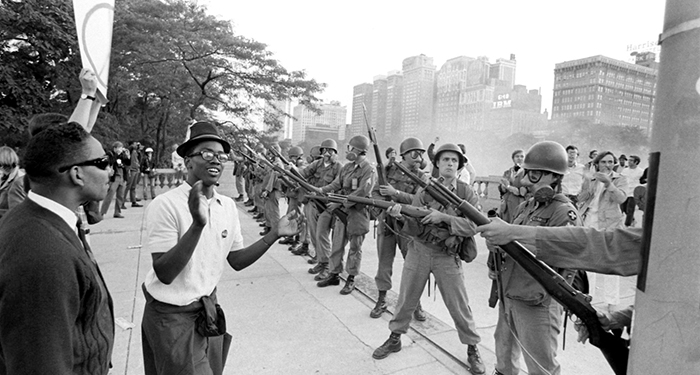
Protests at the Democratic Convention in Chicago, August 1968.
Charles Phillips—The LIFE Picture Collection/Getty Images
The following is a guest blog post by Laura Washington.
On the night of August 28, 1968, thousands of young activists headed for the Democratic National Convention in downtown Chicago, intent on protesting the Vietnam War. Mayor Richard J. Daley dispatched an army of police officers, the National Guard and U.S. Secret Service to contain the protests. Activists appealing for peace were greeted by nightsticks and tear gas. The resulting riot left them brutally beaten and gassed, as they tried to exercise their First Amendment rights. The debacle was televised and triggered outrage around the nation.
The protestors chanted: “The Whole World is Watching.” Fifty years later, the world is still watching. In the age of Black Lives Matter, Me-Too, Times Up and Donald J. Trump, that iconic moment offers lessons and raises questions about many issues: War and peace; government abuse; and police brutality. Who has the right to protest? Who decides? What is the role of social protest in the 21st Century? How have militarization, surveillance and technology changed the way we protest?
On the morning of August 28, 2018, exactly 50 years later, the Great Cities Institute hosted a provocative and urgent program exploring why “The Whole World is Still Watching.” The program was held at the Student Center East, Illinois Room, 750 S Halsted, from 9:00 a.m. – until noon.
About the Author: Laura Washington is a columnist for the Chicago Sun Times.


